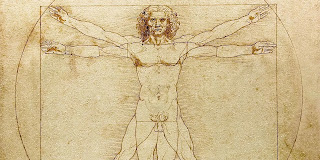Week 1: Two Cultures
April 5, 2024
Week 1: Two Cultures
After reading the article, Leonardo De Vinci speaks in favor of the intersection of art, science and technology. These connections are encouraged by the “Third Culture” that involves elements of all three areas.The main goal is for artists, scientists and scholars to collaborate . By working together, they can share ideas and have respect for each other's ideas.
As I was walking around the UCLA campus, I can see a lively relationship between the sciences and humanities because of its different programs and research actions the school provides. A unique thing about UCLA is that it offers programs like digital media,arts, engineering and cultural studies because of the collaborations of artists, scientists and scholars that's at UCLA. Also having events and seminars at UCLA is a way to help promote communications between the two cultures of art and science.
This changes my perspective because I understand the significance of creating a connection within different areas such as art and science. This shows why interdisciplinary interaction and communication is important. By understanding the importance of these concepts, it helps in real world problem solving and creativity when given the opportunity. Having this perspective allows you to have more knowledge development which can help you get results in different fields you want to achieve in.
As a tennis player showing interdisciplinary skills in areas in sport psychology, biomechanics and nutrition can help me in tennis. Having a creative mind can help me in my training, fitness, preventing injuries and mental techniques in order to help me to get to the next level and to be the best tennis player I can be. Also having a diverse perspective can overall improve my physical abilities, mental focus and strategic choices when I’m playing.
Work Cited
Mick, Hayley. “The Art and Science of Stringing a U.S. Open Tennis Racquet.” The
Globe and Mail, The Globe and Mail, 27 Aug. 2012, www.theglobeandmail.com/sports/more-sports/the-art-and-science-of-stringing-a-us-open-tennis-racquet/article4500407/.
Pacecourt. “The Art and Science of Tennis Court Installation.” Medium, Medium, 17
Nov. 2023, medium.com/@pacecourt129/the-art-and-science-of-tennis-court-installation-13d970013ab9.
Intersection of Art and Science Is What Makes Tennis ...,
www.dailytelegraph.com.au/sponsored/ykIvIHwN1YYx3imNMEVR/intersection-of-art-and-science-is-what-makes-tennis-irresistible-experts-say. Accessed 4 Apr. 2024.
P.j. “The Art and Science of Fitness Training for Tennis (or ‘How I Survived 9 Days
of Tennis Camp’).” The Road to 4.5 Tennis, 9 Sept. 2020, www.roadto45tennis.com/the-art-and-science-of-fitness-training-for-tennis/.
.kt-inside-inner-col, .kadence-column_34dfcf-0d >
.kt-inside-inner-col{border-top-width:0px;border-right-width:0px;border-bottom-width:0px;border-left-width:0px;}.kadence-column_34dfcf-0d >, et al. “NYTM’s Literary Corner: The Art and Science of Ball Watching by Dr. Paul Hamori.” New York Tennis Magazine, newyorktennismagazine.com/article/nytms-literary-corner-art-and-science-ball-watching-dr-paul-hamori/. Accessed 4 Apr. 2024.
Image Work Cited
Tera, Eloi De. “The Window into Leonardo Da Vinci’s Creativity? His Sketchbooks.”
Premium, 5 Oct. 2023, www.nationalgeographic.com/premium/article/leonardo-davinci-notebooks-diaries-renaissance-man.
.kt-inside-inner-col, .kadence-column_34dfcf-0d >
.kt-inside-inner-col{border-top-width:0px;border-right-width:0px;border-bottom-width:0px;border-left-width:0px;}.kadence-column_34dfcf-0d >, et al. “NYTM’s Literary Corner: The Art and Science of Ball Watching by Dr. Paul Hamori.” New York Tennis Magazine, newyorktennismagazine.com/article/nytms-literary-corner-art-and-science-ball-watching-dr-paul-hamori/. Accessed 4 Apr. 2024.
“A Campus Divided.” PRIME, prime.dailybruin.com/justinnorth&southcampus.
Accessed 4 Apr. 2024





Azuma,
ReplyDeleteI too mentioned Leonardo Da Vinci and his work in both the arts and sciences in my blog post! I find it interesting how our blogs took on unique (and brilliant) stand points from one another. You bring up a great point about tennis (and by association many other sports) as being interdisciplinary. I had never thought of sports in that light before, but after reading your insightful post, I will not be able to ignore the interplay of art and science in sports. For example, “plays” in basketball tend to be drawn out and require some type of artistic capacity, while physically executing the “play” involves a little more of a scientific approach with muscle mechanics and nutrition playing vital roles.
Azuma, your blog makes a strong case for encouraging people from different fields to work together by focusing on the idea of combining art, science, and technology. The focus on Leonardo da Vinci's legacy is a timeless example of how these different areas can work together, which is something that the culture and programs at UCLA do very well. Your thoughts on how the university is dynamically combining arts and sciences are part of a larger, important movement to encourage creativity and innovation through engagement across disciplines. Also, your link between these ideas and sports, especially tennis, gives us a new way to think about how approaches from different fields can improve performance and strategy. This not only helps us understand the arts and sciences better, but it also makes them more useful in everyday life, which shows how valuable it is to combine them in this way.
ReplyDelete